The main development phase of ROSAT started in October 1983 with initiation of the CD-contract. Due to extreme manufacturing durations for the X-ray mirrors the Zerodur processing and grinding was started even earlier.
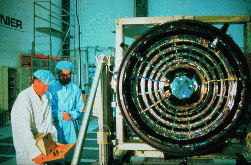
Optical Measurements
In 1993 ROSAT was booked for a launch on board of the Space Shuttle in 1987 and so the design reflected the appropriate unique configuration. The choosen model and test philosophy was especially tailored to the widely different development status of the various spacecraft subsystems and units.
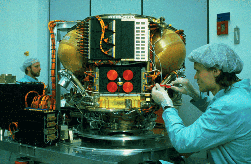
Focal Instrumentation
Thus in order of gaining a fully qualified spacecraft a structural-thermal model (STM) and a flight model (FM) were to be built.
The spacecraft STM however, consisted of a qualification model of the X-ray telescope, of an electrical and STM model the wide field camera, of engineering models and even flight models of electronic units and of the spacecraft structure, which a protoflight model approach had been chosen for.
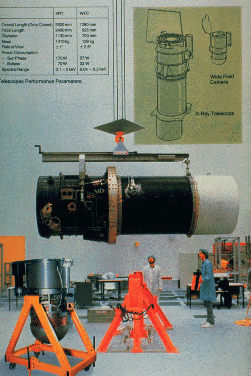
XRT and WFC Mounting
Integration of the spacecraft STM was completed in fall 1985. Extensive system testing follwed, comprising electrical tests, a model survey test and a solar simulation test for verification of both the structural and thermal mathematical models.
Electromagnetic compability was demonstrated by measurement of radiated and conducted emissions and by irradiating the satellite with electric and magnetic fiels expected from the Space Shuttle.
Right into this test period bursted the message of the Challenger accident with all its consequences on launch schedules.
After it became clear that the earliest launch opportunity with the STS would be only in 1994 a feverish search for alternatives started. At the end of these trades it was decided that ROSAT will be launched in 1990 on a McDonnell Douglas Delta II expendable launch vehicle.
The necessary redesign to cope with the different interfaces affected primarily the spacecraft structure and the originally fixed solar array wings which had now to be stowed for launch and deployed in orbit. Furthermore a sequencer had to be implemented to initiate essential electrical systems immediately after separation fron the launcher.
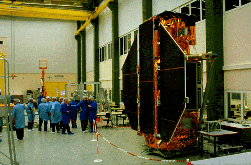
ROSAT - ready for testing
All newly developed parts were manifactured in flight standard. In mid 1988 the Delta II version of ROSAT representing the flight model, was ready for final testing.
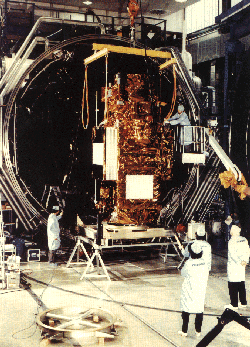
ROSAT - Simulation Test
Qualification of new hardware and acceptance were achieved by a vibration test, an accustic noise test, a thermal balance thermal vacuum test as wellas by EMC and electrical and functional testing.
In oder to protect the XRT with its highly sensitive mirror assembly against contamination as far as possible, it was subjected to a stand-alone vibration test instead of participating in the extensive spacecraft test campaign, where the XRT-QM was used.
The flight XRT was subjected to an extensive 2-months X-ray calibration in MPE PANTER X-ray test facility.
Final integration of the satellite with accompanying integrated testing took place in the late 1989. ROSAT was launched on June 1, 1990 from Cape Canaveral.
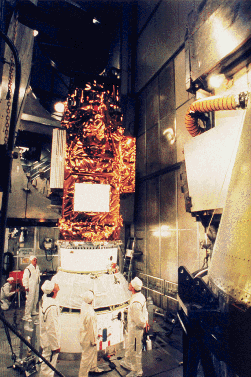
ROSAT/Delta II Marriage